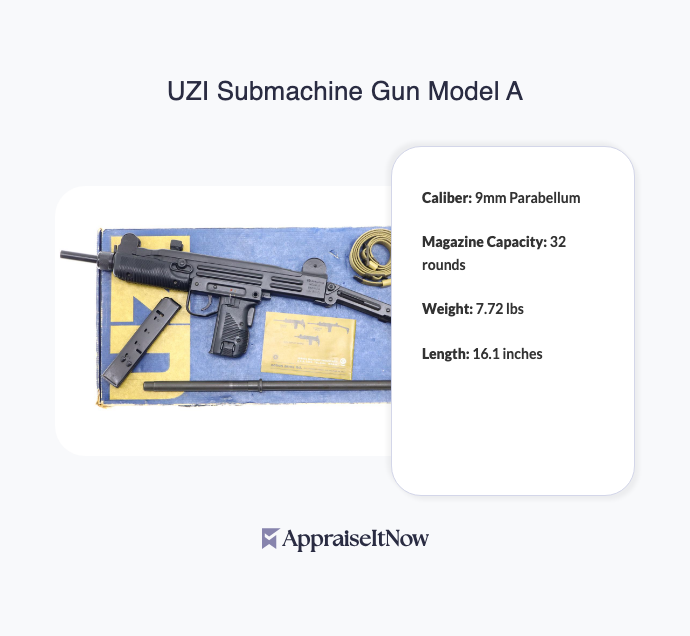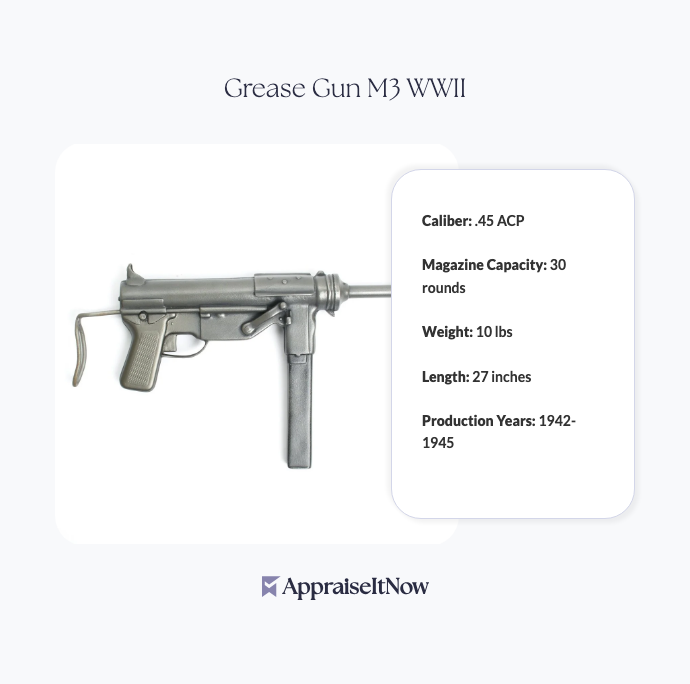<h1>How to Get Your Spencer Repeating Rifle 1860 Appraised</h1>
<p>The Spencer Repeating Rifle 1860 stands as one of the most significant firearms in American history, commanding strong interest among collectors, museums, and history enthusiasts. If you own one of these iconic Civil War-era weapons, understanding its current market value—typically ranging from <strong>$7,000 to $10,000</strong>—and how to get it professionally appraised is essential for insurance, sale, or collection documentation purposes.</p>
<h2>Understanding Your Spencer Repeating Rifle's Historical Significance</h2>
<p>Your Spencer Repeating Rifle 1860 represents a pivotal moment in firearms evolution. Designed by <strong>Christopher Spencer</strong> and first introduced in <strong>1860</strong>, this lever-action repeating firearm revolutionized battlefield tactics during the American Civil War by enabling soldiers to fire multiple rounds in rapid succession. With its seven-round magazine capacity, the Spencer outpaced single-shot muskets that dominated earlier conflicts, making it a formidable weapon that influenced military strategy across both Union and Confederate forces.</p>
<p>The question of what made the Spencer special isn't easily answered with a single factor. Its innovative rapid-fire mechanism gave Union cavalry units devastating firepower advantages, particularly in close-quarter engagements. The rifle's robust construction and reliable firing system earned respect from soldiers who valued dependability over flashy design. When collectors ask what the repeating rifle in the 1860s represented, they're acknowledging the Spencer's role as a game-changing technology that prefigured modern military weapons.</p>
<div class="callout tip"><p><strong>Historical Context</strong></p>
<p>The Spencer's rapid-fire capability gave equipped units significant tactical advantages, leading Confederate forces to claim that Union soldiers "loaded on Sunday and fired all week."</p></div>
<h2>Key Specifications That Affect Appraisal Value</h2>
<p>When professional appraisers evaluate your Spencer Repeating Rifle 1860, they examine specific technical features that directly impact valuation. The rifle's distinctive characteristics include its lever-action mechanism, seven-round Spencer cartridge magazine, and caliber specifications that varied slightly across production runs.</p>
<p>Your rifle's construction quality reflects the manufacturing standards of the 1860s. The Spencer featured a durable design with a removable magazine that was revolutionary for its era—a feature absent from competing rifles. This practical innovation, combined with its reputation for accuracy and reliability, explains why original Spencer rifles remain highly sought after despite their age.</p>
<p>The rifle's effective range of approximately 100-200 yards was exceptional for a repeating rifle of its period, though modern standards would consider this relatively modest. What matters for appraisal purposes is that contemporary accounts consistently praised the Spencer's performance, making documented examples with clear provenance particularly valuable to collectors interested in <a href="/types/antique-gun">antique guns</a>.</p>
<h2>Condition Assessment and Originality Factors</h2>
<p>The condition of your Spencer 1860 significantly affects its appraised value within the <strong>$7,000-$10,000</strong> range. Professional appraisers, much like those evaluating other <a href="/types/antiques">antiques</a>, conduct comprehensive condition assessments examining multiple factors.</p>
<p><strong>Original finishes and components</strong> command premium prices. Rifles retaining their period-correct bluing or casehardening, original wood furniture, and intact mechanical mechanisms typically appraise at the higher end of the value spectrum. Conversely, heavily restored or refinished examples may see valuations reduced by 20-30% depending on the quality of restoration work. The distinction parallels how <a href="/types/antique-furniture">antique furniture</a> values fluctuate based on preservation versus restoration choices.</p>
<p><strong>Bore condition</strong> tells experienced appraisers much about a rifle's firing history. Bright, sharp rifling indicates minimal use, while worn or pitted bores suggest extensive service. This mechanical condition directly correlates with appraised value—a rifle with pristine bore characteristics and matching serial numbers across receiver, barrel, and buttstock commands substantially higher prices than examples showing heavy wear or mismatched parts.</p>
<table class='appraisal-table'>
<thead>
<tr>
<th>Condition Level</th>
<th>Estimated Value Range</th>
<th>Key Indicators</th>
</tr>
</thead>
<tbody>
<tr>
<td>Excellent (95%+)</td>
<td>$9,000-$10,000</td>
<td>Minimal wear, original finish intact, bright bore</td>
</tr>
<tr>
<td>Very Good (85-94%)</td>
<td>$8,000-$9,000</td>
<td>Light handling wear, good bore, matching parts</td>
</tr>
<tr>
<td>Good (70-84%)</td>
<td>$7,000-$8,000</td>
<td>Moderate wear, functional condition, possible refinish</td>
</tr>
<tr>
<td>Fair (Below 70%)</td>
<td>$5,000-$7,000</td>
<td>Heavy use, wear patterns visible, restoration needed</td>
</tr>
</tbody>
</table>
<h2>Documentation and Provenance Requirements</h2>
<p>Comprehensive documentation dramatically enhances your Spencer 1860's appraised value. Professional appraisers require specific information to validate authenticity and establish fair market value. Unlike asking casually "how much did a Spencer rifle cost originally?" (typically $30-40 in 1860s dollars), modern appraisals demand substantive verification.</p>
<p><strong>Serial number matching</strong> across the receiver, barrel, and buttstock indicates an original, unmolested rifle rather than an assembled example combining parts from multiple weapons. Appraisers note when components carry matching serialization, as this authenticity commands premium pricing. Original manufacturing marks, inspection stamps, and regimental markings provide valuable historical context that collectors treasure.</p>
<p>Historical documentation strengthens your appraisal considerably. If your Spencer includes provenance establishing its service history, unit assignment, or documented ownership chain, these details justify higher valuations. Soldiers' accounts, family letters, military records, or auction house documentation from previous sales all contribute to establishing credible market value. This mirrors how professional appraisers evaluate <a href="/types/memorabilia-and-collectibles">memorabilia and collectibles</a> where chain of custody and historical documentation prove essential.</p>
<div class="callout note"><p><strong>Documentation Impact</strong></p>
<p>Spencers with clearly documented Civil War service records or identified veteran provenance can command 15-25% premiums over comparable rifles lacking such documentation.</p></div>
<h2>Market Demand and Collector Demographics</h2>
<p>Understanding current collector interest in Spencer Repeating Rifles helps explain valuation dynamics. The rifle appeals to several overlapping collector communities: Civil War historians, military small arms specialists, American history enthusiasts, and general firearms collectors seeking significant historical pieces. This broad appeal supports steady market demand and stable valuations.</p>
<p>The question of whether the Spencer rifle is considered an antique has clear answer—yes. Firearms manufactured before 1899 are federally classified as antiques, though the 1860 Spencer transcends this legal definition by virtue of its documented historical significance. Beyond legal classification, the rifle qualifies as authentic <a href="/types/antique-artwork">antique artwork</a> in the eyes of serious collectors who value it as a functional sculpture representing technological achievement.</p>
<p>Civil War commemorations, especially during anniversary years, temporarily boost collector interest and can support higher market prices. Conversely, regional economic conditions and general firearms market fluctuations affect demand. Your appraiser should be familiar with current market trends affecting Spencer rifles specifically, as these dynamics influence final valuation recommendations. For guidance on understanding how market trends affect valuations, explore resources on <a href="/blog/the-impact-of-market-trends-on-personal-property-appraisals-a-comprehensive-analysis-3">personal property appraisals</a>.</p>
<h2>Why Professional Appraisal Matters for Spencer Rifles</h2>
<p>Obtaining a certified appraisal from a credentialed expert serves multiple important purposes beyond simple curiosity about your rifle's worth. Insurance companies require professional appraisals to establish replacement value for firearms included in homeowners or specialty collections policies. Legal proceedings involving estate division, divorce settlements, or disputed ownership claims demand independent, documented valuations meeting professional standards.</p>
<p>When selling through auction houses or private dealers, a professional appraisal establishes realistic pricing expectations and provides leverage in negotiations. Buyers of significant firearms typically request independent appraisals before committing to substantial purchases. Having professional documentation already in hand streamlines transactions and demonstrates your confidence in your rifle's authenticity and value assessment.</p>
<p>Professional appraisers bring specialized knowledge that casual observers lack. They understand manufacturing variations, production dates, regional differences in construction, and market-specific demand factors that affect valuation. They can identify whether your Spencer represents a standard production rifle or a variant commanding premium pricing. This expertise, combined with documented methodology and credentials, produces appraisals accepted by insurance companies, courts, and financial institutions.</p>
<div class="callout tip"><p><strong>Professional Advantage</strong></p>
<p>USPAP-compliant appraisals from certified experts provide documentation that stands up to professional and legal scrutiny, whether for insurance claims, sale negotiations, or estate purposes.</p></div>
<h2>Selecting the Right Appraiser for Your Spencer 1860</h2>
<p>When choosing an appraiser for your Spencer Repeating Rifle, verify their credentials and specialized experience with period military firearms. Legitimate appraisers hold certifications from recognized organizations such as the <strong>American Society of Appraisers (ASA)</strong>, <strong>International Society of Appraisers (ISA)</strong>, or <strong>American Association of Appraisers (AAA)</strong>. These credentials indicate formal training, continuing education requirements, and adherence to professional ethics standards.</p>
<p>Look for appraisers with specific expertise in Civil War-era firearms and <a href="/blog/5-tips-for-getting-the-most-accurate-antique-gun-appraisal">antique gun appraisals</a>. Someone experienced primarily with modern firearms may lack the specialized knowledge required to accurately assess your 1860s Spencer. Ask potential appraisers about their experience with comparable rifles, their knowledge of current market conditions, and their familiarity with USPAP (Uniform Standards of Professional Appraisal Practice) compliance requirements.</p>
<p>AppraiseItNow connects you with vetted appraisers across the U.S. who specialize in firearms and historical weapons valuation. Our network includes credentialed experts who understand the nuances of Civil War weapons, market dynamics affecting Spencer rifles, and the documentation requirements necessary for legal and insurance purposes. You can submit photographs and descriptions of your Spencer online and receive professional appraisal recommendations from qualified specialists in your region.</p>
<h2>Legal and Regulatory Considerations</h2>
<p>Understanding legal requirements surrounding your Spencer 1860 is essential before seeking appraisal or sale. Federal law classifies firearms manufactured before 1899 as antiques, exempt from many modern firearm regulations including transfer restrictions and serial number requirements that apply to newer weapons. This classification simplifies ownership and transfer of original Spencer rifles compared to post-1899 firearms.</p>
<p>However, state and local regulations vary significantly regarding antique firearm ownership and transport. Some jurisdictions impose additional restrictions despite federal antique classification. Before transporting your Spencer for appraisal or sale, verify local legal requirements to ensure compliance. Professional appraisers familiar with firearms regulations can guide you through these considerations.</p>
<p>The question of whether old rifles have any monetary value receives definitive answer through professional appraisal. Your Spencer possesses genuine market value based on demonstrated collector demand, historical significance, and technical specifications. Professional documentation establishes this value credibly, protecting you whether you're selling, insuring, or preserving the rifle for future generations.</p>
<h2>Preservation Strategies Between Appraisals</h2>
<p>Maintaining your Spencer's condition between professional appraisals protects its market value and historical integrity. Store your rifle in a climate-controlled environment maintaining consistent temperature and humidity levels—ideally 50-70°F with 45-50% relative humidity. Excessive moisture promotes rust and corrosion, while dry conditions can cause wood shrinkage and metal brittleness.</p>
<p>Use appropriate lubrication and preservation products designed for antique firearms. Avoid modern gun oils that may contain solvents harmful to original finishes or wood furniture. Regular inspection for signs of corrosion or deterioration allows early intervention before damage compounds. Professional-quality storage cases with appropriate padding prevent mechanical damage from movement or impact.</p>
<p>Document your rifle's condition through high-resolution photography from multiple angles, capturing all markings, serial numbers, and notable features. Maintain these photographs with your appraisal documentation, creating a comprehensive record for insurance purposes or future appraisals. This approach parallels how conservators preserve <a href="/types/antique-silver">antique silver</a> and other historical items, recognizing that proper documentation equals proper stewardship.</p>
<h2>Summary: The Value of Professional Spencer Rifle Appraisals</h2>
<p>Your Spencer Repeating Rifle 1860 represents both historical significance and genuine monetary value within the <strong>$7,000-$10,000</strong> market range. Whether you're evaluating your rifle for insurance purposes, considering sale, or documenting your collection's worth, professional appraisal provides essential validation, documentation, and peace of mind. The rifle's role in American Civil War history, combined with its innovative design and collector appeal, ensures continued market interest and stable valuations.</p>
<p>Obtaining a certified appraisal from a credentialed expert who understands Civil War firearms, current market conditions, and professional appraisal standards protects your interests whether you're buying, selling, or preserving this iconic weapon. Professional documentation establishes your rifle's authenticity, condition, and fair market value according to standards accepted by insurance companies, courts, and financial institutions.</p>
<div class="callout note"><p><strong>Key Takeaway</strong></p>
<p>A professional appraisal of your Spencer Repeating Rifle 1860 provides credible market valuation, essential insurance documentation, and authenticated historical verification—ensuring you understand both the historical significance and monetary worth of this Civil War-era firearm.</p></div>







.avif)







